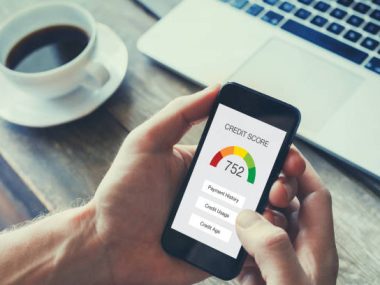Carrying debt can be a burden that affects not just your financial health but your mental and emotional well-being, too. Crafting a Debt Repayment Plan is like charting a course through turbulent financial waters – it’s a strategy designed to guide you to the shores of financial stability.
This blog will delve into the essential steps to create a feasible debt repayment strategy, focusing on How to Create a Debt Repayment Plan and using the right tactics and tools to become debt-free.
What Are The First Steps To Creating A Debt Repayment Plan?
Starting your journey towards financial freedom begins with a solid plan. Setting up an effective debt repayment plan requires an understanding of what you owe and how you will approach repayment.
Firstly, it is crucial to thoroughly assess your total debt. List out every debt you owe – from credit card debts to personal loans. Being aware of the entirety of your debt gives you the clarity needed to tackle it systematically.
Assessing and Prioritizing Your Debt
Prioritizing debts is next, which involves a careful evaluation of interest rates and repayment deadlines. The priority generally goes to those debts that cost you the most – typically those with higher interest rates.
Creating a budget that meshwork’s with your debt repayment is fundamental. Your budget should balance living expenses with your repayment goals, ensuring that you’re setting aside adequate funds to continuously chip away at your debts.
Setting repayment goals is another critical piece of the puzzle. Establishing concrete but achievable monthly targets keeps you locked onto your financial objectives.
Lastly, choose between popular repayment strategies like the debt snowball method or the debt avalanche approach. Your choice will depend on whether you prefer quick wins or are aiming to minimize interest over time.
- Compile a list of all debts, including balances and interest rates.
- Determine the payoff order by examining interest rates and due dates.
- Develop a balanced budget that prioritizes debt repayment.
- Set specific, achievable monthly debt repayment targets.
- Decide on a suitable repayment strategy that best aids in achieving your goals.
In conclusion, the initial phase of creating a debt repayment plan revolves around getting a clear picture of your financial obligations and preparing a structured approach to managing and eliminating these debts.
How Do I Prioritize Which Debts To Pay Off First?
Prioritizing which debts to pay off first is critical in mapping out your debt repayment strategy. It can mean the difference between spiraling costs and a swift journey to debt freedom.
The debts with the highest interest rates, like credit cards or payday loans, are the ones that should generally garner the most attention. These are the debts that, if left unchecked, will compound quickly and deepen the hole of financial burden.
Identifying and Tackling Debts Effectively
The debt snowball method offers an alternative approach that might better suit those who gain momentum from quick wins, targeting smaller debts first in order to build up a feeling of accomplishment.
Alternatively, the debt avalanche method hinges on paying off debts with the highest interest rates first, which can lead to significant savings on interest payments in the long term.
Realistically evaluating your budget is essential to determining how much you can afford to put towards your debts each month. This includes making sure you at least cover minimum payments to avoid additional fees and penalties.
While focusing on repaying your debts, it’s vital not to neglect contributions to your emergency fund and retirement savings. Financial health is about balance – you’ll want to simultaneously secure your present and future.
- Target high-interest debts to minimize the total interest paid over time.
- Use the debt snowball method for motivational wins by paying off small debts first.
- Choose the debt avalanche approach for a mathematically efficient repayment.
- Realistically assess how much you can dedicate to debt repayment monthly.
- Continue to fund your emergency and retirement savings while repaying debt.
To wrap it up, prioritizing your debts requires balancing psychological wins with financial efficacy while ensuring overall financial stability is not compromised.
Should I Consider Consolidating My Debts As Part Of My Repayment Plan?
When contemplating how to streamline your debt repayment, debt consolidation is a strategy worth considering. It can simplify your finances by merging your debts into a single, more manageable payment.
Debt consolidation has the potential to reduce your interest rate, depending on your credit profile, which could lower your total payment in the long run. However, it’s paramount to thoroughly evaluate any fees and terms to confirm that consolidation fits within your financial landscape.
Your credit score plays a monumental role when considering consolidation. It influences your eligibility and the interest rate you will receive, underlining the importance of maintaining a solid credit history.
The Benefits of Debt Consolidation
Debt consolidation simplifies your payments, which can improve budget management and, consequently, your credit score as you make consistent, on-time payments.
Comparing different consolidation methods, such as balance transfer cards, personal loans, or home equity loans, enables you to select the option that best suits your unique financial situation.
- Consider debt consolidation to simplify repayment and potentially get a lower interest rate.
- Closely examine any associated fees and ensure the terms align with your financial goals.
- Understand how your credit score influences consolidation options.
- Leverage consolidation to improve budget management and credit score.
Considering consolidation is an important decision that requires a deep dive into your finances and an understanding of how it could streamline your debt repayment journey.
How Can I Adjust My Budget To Better Accommodate My Debt Repayment Plan?
A key to enduring success in debt repayment is adjusting your budget to sync with your ambitions. It begins with taking stock of your current expenses and identifying areas where expenditures can be optimized.
Confront your spending habits, categorize your expenses, and uncover non-essential costs you can reduce or eliminate. Allocating saved funds to debt repayment can significantly accelerate the process.
Optimizing Your Financial Strategy
Targeting high-interest debts, either through the debt snowball or debt avalanche method, should be your primary financial tactic. Your budget should reflect this strategy by putting aside funds for this purpose.
Supplementing your income through side gigs, overtime, or by selling items no longer in use, can provide additional resources to expedite your debt repayment without impacting your essential costs of living.
Adopting a frugal mindset, exemplified by home-cooked meals or canceling unused subscriptions, empowers you to sustain a low-cost lifestyle, ultimately freeing up more cash for debt clearance.
Monitoring your financial flow and making amends to your budget as needed is also important. This flexibility allows you to stick to your goals, even when life throws you a curveball.
- Audit your spending to identify and cut non-essential costs.
- Adjust your budget to target high-interest debts effectively.
- Look for methods to increase your income to support debt repayment.
- Adopt cost-saving habits to decrease monthly expenses.
- Review and adjust your budget regularly to stay aligned with your debt repayment goals.
Revising your budget to accommodate your debt repayment plan is an essential step that requires ongoing assessment and a willingness to adapt.
What Tools Or Resources Can Help Me Stay On Track With My Debt Repayment Plan?
Staying committed to your debt repayment plan over time can be helped by utilizing the right set of tools and resources designed for financial management and monitoring.
Budgeting apps provide a high level of convenience, offering a digital helping hand in managing your spending and ensuring funds are directed towards your debt repayment.
Debt repayment calculators are valuable for visualizing your repayment timeline and testing out various scenarios about how different payment amounts may impact your end date.
Leveraging Resources for Financial Success
Automatic payments can save the day by ensuring timely payments that support your credit score, reducing the possibility of incurring late fees.
Seeking professional support from a financial advisor or credit counselor can furnish you with personalized advice, significantly improving the efficiency of your debt repayment endeavor.
Creating your own spreadsheets or using pre-built templates allows you to visualize the full spectrum of your debts, payments, and accomplishments, helping you stay inspired throughout your financial journey.
- Use budgeting apps for efficient financial management and debt allocation.
- Turn to debt repayment calculators for a clearer understanding of your repayment timeline.
- Set up automatic payments to maintain consistent progress.
- Consider consulting with a financial advisor or credit counselor for expert guidance.
- Track your progress with spreadsheets or templates for motivation and clarity.
By embracing these tools and resources, you are building a robust framework supporting your debt-free goal. By navigating each of these critical steps, you can architect a Debt Repayment Plan that’s not just operable but optimized for your financial nuances.
The road to debt freedom requires persistence, a disciplined budget, and the strategic use of resources tailored to your unique financial situation. With determination and the right plan of action, conquering your debts becomes a challenge that is not just possible but probable.
Please Help Share This Post









